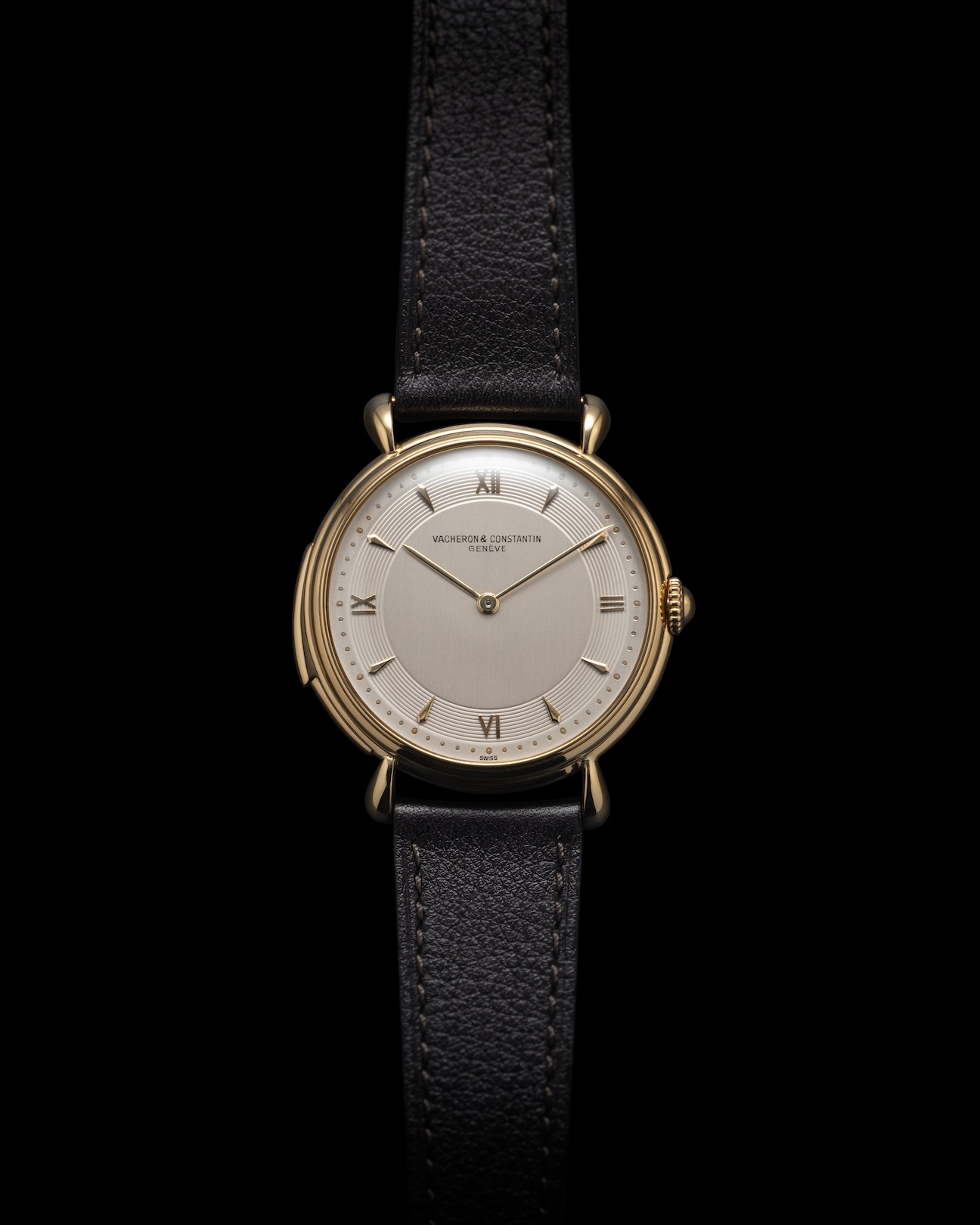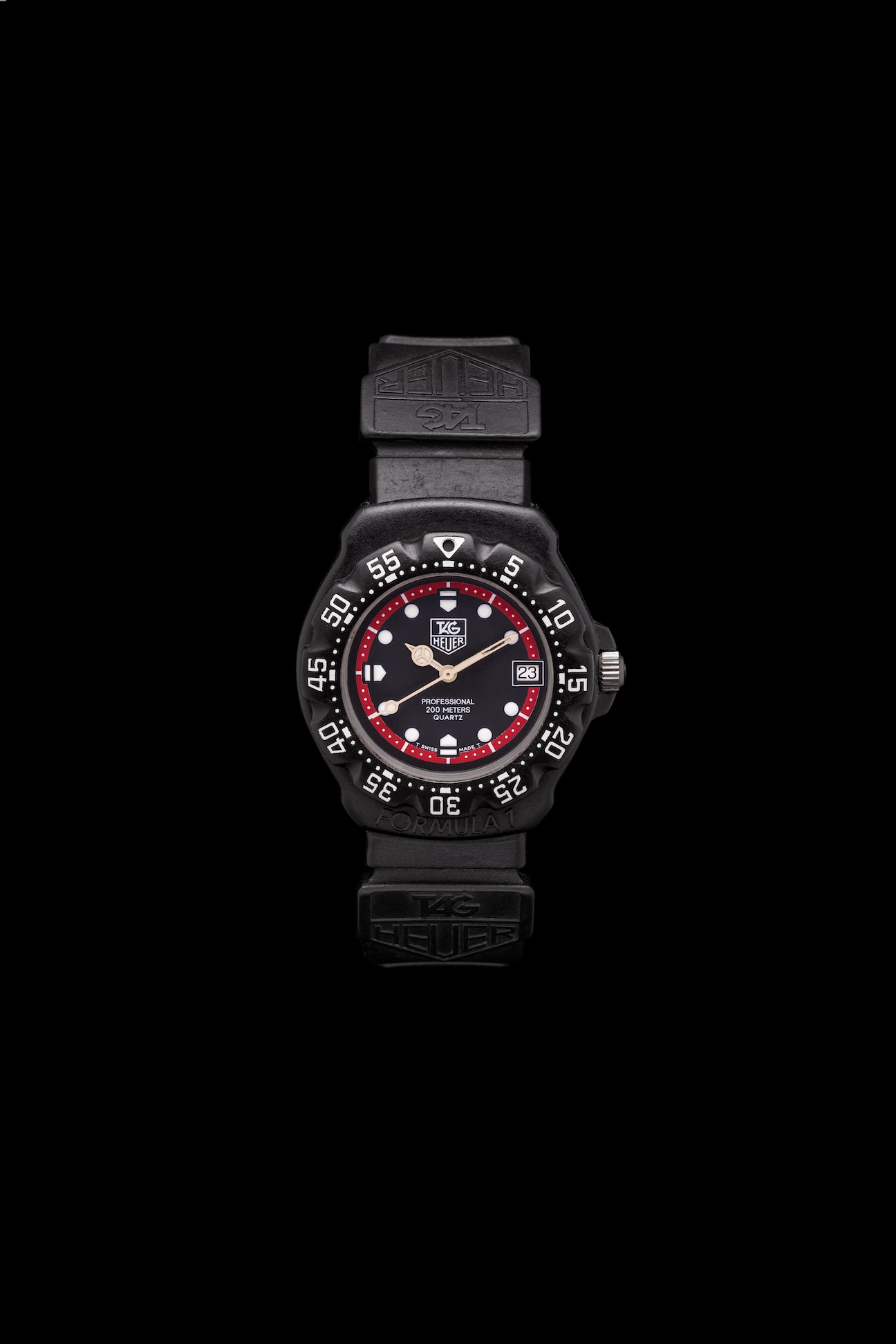
It’s easy to recognize that the TAG Heuer Formula 1, upon its release in a cornucopia of bright plastic colors, was a piece of watch design unlike anything else that managed to capture the energy of the 80s in a 35mm watch. But the watch synonymous with high-octane racing had nothing to do with racing during its conception. In fact, the man behind the watch, Eddy Burgener, was given a brief in 1985 with an inspiration board of bright surfboards and beach clothes. The task was seemingly simple — create a new watch for the American market that would compete for a younger audience accustomed to colorful Casios on the coast and make it a Swiss option that was both fun and affordable.
Colorful designs meant synthetic materials, which proved to be surprisingly challenging in the late 80s when creating a dive watch with a water resistance of 200 meters. Burgener drew upon some of his previous dive watch designs for TAG Heuer, softened the silhouette, and cast the exterior case in a vivid fiberglass-and-plastic blend to achieve the desired effect. The inner case would still be made of steel for water resistance.
But it seemed that TAG Heuer realized that the specs of a fun and accessible dive watch could also be positioned as a driver’s watch, no doubt in part of the brand’s ever-growing visibility in motorsports. Thus, “200 mph” overtook “200m” as the headliner when the watch was launched in 1986 as the “Formula 1” collection, and a new icon was born.
